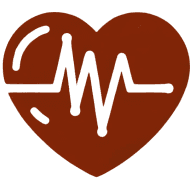What Technological Advancements Have Changed Cardiology?
In the ever-evolving field of cardiology, a Consultant Cardiologist kicks off our exploration by highlighting how TAVR has revolutionized aortic valve replacement. Alongside this expert perspective, we've gathered additional answers that reflect the diverse technological breakthroughs reshaping cardiac care. From the advent of AI in diagnostics to the promise of stem cell therapy in tissue regeneration, here's a glimpse into the innovations that are transforming the daily practices of cardiology professionals.
- TAVR Transforms Aortic Valve Replacement
- AI Enhances Cardiology Diagnoses
- Wearable Tech Monitors Heart Health
- 3D Printing Customizes Heart Valves
- Robotic Surgery Advances Cardiac Care
- Stem Cell Therapy Regenerates Heart Tissue
TAVR Transforms Aortic Valve Replacement
One specific technological advancement in cardiology that has significantly changed my work is the advent of transcatheter aortic valve replacement (TAVR). This minimally invasive procedure allows us to replace a patient's aortic valve without open-heart surgery.
TAVR has reformed the treatment of aortic stenosis, particularly for patients who are considered high-risk for traditional surgery due to age or comorbidities. The method involves threading a catheter through a blood vessel to the heart and implanting a new valve within the diseased one. The recovery time is significantly shorter than that of open-heart surgery, and patients often experience immediate relief from symptoms.
In my practice, TAVR has not only improved patient outcomes but has also streamlined our workflow. The ability to perform complex interventions with less risk and quicker recovery times has increased our capacity to treat more patients effectively. The integration of advanced imaging techniques during the procedure ensures precision and further enhances the safety and success rates of TAVR.
The impact of TAVR extends beyond individual patient care. By setting new standards for minimally invasive procedures, TAVR contributes to overall advancements in cardiovascular medicine. This technology exemplifies how innovation in medical devices can transform clinical practice and patient experiences in cardiology.

AI Enhances Cardiology Diagnoses
Artificial intelligence (AI) has revolutionized the field of cardiology by significantly enhancing the precision of diagnoses. This technology can analyze medical images and patient data much faster and with greater detail than traditional methods. By detecting nuances that could potentially be missed by human eyes, AI aids cardiologists in identifying heart conditions early on.
It also assists in predicting patient outcomes, allowing for more personalized treatment plans. For those concerned about heart health, it's advisable to seek out medical centers that incorporate AI into their diagnostic processes.
Wearable Tech Monitors Heart Health
Wearable technology has become a game-changer in monitoring cardiac health outside the doctor's office. Devices such as smartwatches and fitness trackers can now record heart rate data in real time, alerting users to potential irregularities as they occur. This constant monitoring provides a comprehensive look at one's cardiac health, giving both individuals and physicians actionable information.
It empowers people to be proactive in their health management and can catch potentially serious issues early. To stay on top of your cardiac health, consider investing in a wearable device and regularly checking your heart data.
3D Printing Customizes Heart Valves
With the advent of 3D printing, creating customized prosthetic heart valves has become a reality. This technology enables the production of valves that fit the anatomical specifications of individual patients perfectly. As a result, the implanted valves can operate more efficiently, reducing the risk of complications and improving the patient's quality of life.
Unlike mass-produced prosthetics, these 3D-printed valves are tailored to meet the unique needs of each person's heart. If you or someone you know is facing valve replacement surgery, inquire about the possibility of a 3D-printed prosthetic for a personalized treatment option.
Robotic Surgery Advances Cardiac Care
Robotic surgery has brought a new level of precision and control to cardiac procedures, decreasing risks associated with traditional open-heart surgery. Surgeons can operate with minute incisions, guided by sophisticated robotics, resulting in less tissue damage and quicker patient recovery times. These advancements have made surgeries that were once deemed highly invasive, far less intimidating.
The enhanced control also allows surgeons to perform complex maneuvers that were not possible before, making successful outcomes more likely. If surgery is in your future, discuss the option of robotic surgery with your cardiologist for a potentially safer and more precise procedure.
Stem Cell Therapy Regenerates Heart Tissue
Stem cell therapy is at the forefront of regenerative medicine, especially in the field of cardiology, where it is used to repair and regenerate damaged heart tissue. By introducing stem cells to the damaged areas, these cells have the potential to develop into new, healthy heart tissue, offering hope for recovery to patients who have suffered from heart attacks or other cardiac diseases. This therapy is part of a wider movement towards personalized medicine that could transform the approach to treating heart conditions.
As research continues, the potential for regenerative therapies to heal the heart is expanding. Engage in conversations with healthcare providers about the latest developments in stem cell research for heart disease and understand the options available.

